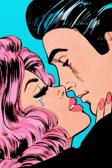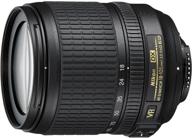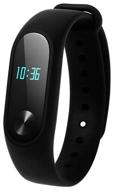
Review on 📷 Tokina AT-X PRO DX 11-20mm f/2.8 Lens for Nikon F - Ultimate Digital SLR Pro DX Lens by Steve Campbell

Tokina 11-20 f2.8 is a good performer.
Firstly I also had Tokina 11-16 f2.8 (first version without focus motor) and Tokina 12-28 f4. I found 11-16 too limited in my zoom range and changed it to 12-28. The 11-16 has always been extremely sharp at all focal lengths and apertures, but also had a lot of blowout. 12-28 was less sharp and had to be closed to around f5.6 to be as sharp as 11-16 wide open. There were also many highlights. When this lens came out, I felt it was time to leave the 12-28 and go back to a faster, wide-angle lens. It's nice to have a faster aperture and still have a reasonable zoom range. So far the lens has been very good, some things have been improved and some things I would call a bit worse. I currently shoot with the D7100 (and the D810 - see below for an opinion on using it with FX). The lens is very, very sharp, about the same as the 11-16. The build quality is excellent and the zoom ring feels just right - not too tight, not too loose. I am neutral about the operation of the manual focus clutch. It works well but isn't really any better or worse than using a switch. The focus is quite fast and is positively fixed without jerking. And lens flare has been greatly reduced! Neither the 11-16 nor the 12-28 handle flare well, but this new lens is better in this regard, day and night. Very little noticeable flickering in some of the shots I was intentionally trying to capture. The extra zoom range is a very nice feature that makes the lens more versatile. I've mentioned some of the downsides compared to its older cousins: This lens has more edges than either of the other two I've owned before. Even with a smaller aperture, the violet and green color fringes on the high-contrast edges are quite pronounced. I would recommend using Lightroom or other software to correct chromatic aberration and color fringing. I'm sure it's even easier to correct a lens profile when viewing it in Lightroom. I can make shots look really good even without a profile with minimal effort. The corners appear a bit softer further down in the image of 11-20 and remain a bit soft even with the aperture closed. But we're talking very extreme angles as you approach f5 or something. Wide open, most of the corner area is slightly fuzzy and soft, and some vignetting is noticeable. 11-16 was a bit better, but I think it's an acceptable trade-off since we now have a larger zoom range to work with. The lens uses 82mm filters which might be a disadvantage for some but not a problem for me as I already have another lens that uses them (Tamron 24-70 VC). I wanted to give some information about using this lens. with a full frame camera as I also own and use one and have in fact used other Tokina lenses on the D810 and my previous D700. The 11-16 works well with a 15-16mm focal length, the only requirement is to remove the lens hood at 15mm. 16mm could even be used with the hood on. 12-28 worked from 20mm to 28mm, and for 20-21mm the hood had to be removed. 11-20 can also be used on the FX with a usable range of 18-20. Doesn't go as far as the old 11-16. And if everything is in order with soft and somewhat vignetted corners, then 17 mm (just under) is also possible without a hood. I would recommend removing the lens hood for anything other than 20mm, and even then it's best not to remove it if possible. It should be noted that no full-frame camera shot is as sharp in the corners as DX shots. I noticed that while the image circle gets big enough for an FX sensor at around 17mm, the far corners remain soft and blurry even at 20mm. Stopping here doesn't help much. It's nice that it can be used with my two cameras though, and I've already taken some really nice 36MP shots from 11-20 on my D810. I'm sure the D810's 1.2x crop mode will improve usability and performance by cropping the worst part of the image. I plan to check that out too, I just don't see the point of shooting 25MP on my D810 when I already have 24MP and full zoom on my D7100. Shooting at high ISO is the only scenario where I see a significant benefit. Overall this is a good lens and I'm glad I have it. It's better than 12-28 and in many ways just as good or better than 11-16 with a few compromises. If you're looking for an ultra wide-angle lens, we definitely recommend this one. Tokina makes great lenses for the price and this one is no exception. Would give 4.5 stars if possible but can't give 5 due to very small imperfections. I think those who have high expectations will be more than satisfied with the results. Edit June 16, 2015: Now that I've shot more with the D810 and Tokina 11, I have a better understanding of how to use this lens with FX cameras. -20 combination. Now I would recommend setting the focal length to 16mm (and no lens hood) even if you don't need that width for the shoot. After testing images with focal lengths between 15mm and 20mm, the 16mm setting proved to be the best. Vignetting is almost non-existent at 16mm. Interestingly, the corners are about as soft at 16mm as at 20mm. They don't really get any better with the magnification, as I mentioned in the original review. That's why I say shoot 16mm and cut what's not sharp enough. This way you will get the most useful image. You'll find that you need to crop the same number of frames from a 20mm shot, so you have less to work with. I added 2 pictures to my review. The canyon image was taken with the D810 at 16mm (no crop) and the river image with the D7100 at 11mm. Pretty impressive sharpness using either camera. You just need to crop the whole frame to get the sharpness over the whole frame.
- Dream come true
- Secret
New products
Comments (0)
Top products in 👓 Lenses

Canon EF 40mm f/2.8 STM Lens - Fixed Black (6310B002) for US Cameras

76 Review

New Nikon 18-105mm Vibration Reduction 📷 Zoom Lens with Auto Focus for Nikon DSLRs

104 Review

Canon EF 50mm f/1.8 II Fixed Lens - Discontinued by Manufacturer

93 Review

Nikon 50mm f/1.8D Lens: Perfect for Nikon DSLR Cameras!

97 Review





